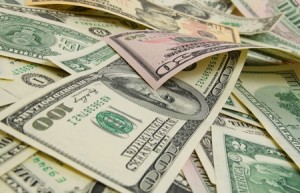MANILA — The peso on Monday slid to a nearly eight-year low, a level of weakness previously experienced at the height of the global financial crisis in 2008.
The close of 49.2:$1 at the start of the week was the weakest since Dec. 4, 2008’s 49.37:$1.
At the Philippine Dealing System, the domestic currency reached an intraday low of 49.2:$1 and a high of 49:$1 after opening at 49.01:$1.
The total volume traded slid to $661.85 million from $707.5 million last Friday.
Bangko Sentral ng Pilipinas Governor Amando M. Tetangco Jr. told reporters that the weaker peso was a result of the dollar’s strength.
“The other regional currencies also showed weakness today because the expectation of the market is the policies that are going to be adopted by the US government [under Donald Trump] will likely lead to higher interest rates, particularly Treasury rates, and as a result of that, capital flows are being moved towards the US. That’s regional, emerging markets-wide,” Tetangco explained.
Bank of the Philippine Islands associate economist Nicholas Antonio T. Mapa said the weaker peso was “still due to the result of the election in the US,” referring to Trump’s win as president, which pundits said has been making markets jittery amid policy uncertainty.
“The US dollar-peso [pair] jumped higher as the dollar continued to pummel regional currencies on soaring US Treasury yields. Chances for a Fed rate hike were also bumped up in reaction to comments from Fed vice chair Fischer, lending more strength to the dollar. Heavy foreign selling in the local equity market, which fell 1.49 percent, also forced the peso to see its weakest level since Dec. 4, 2008,” Mapa said.
“But I believe this is temporary and the peso will recover. I don’t think the peso will go beyond 50 to a greenback, and we maintain our forecast of 49.02 versus the dollar by yearend,” he added.
Despite the weaker peso and external shocks, economists are optimistic that the Philippines would continue to sustain strong economic growth amid solid fundamentals.
“In terms of financial flows, the Philippines is currently buffeted by the ‘Trumpest’ as the PSEi craters below 7,000 and bond markets finally re-price. The peso has also been under siege but with more than $85 billion tucked away in Tetangco’s piggy bank, we are seen to ride out the storm better than we had in 1997,” Mapa said in a separate report Monday, referring to the country’s robust dollar reserves.
For Mapa, the Philippines would “weather the storm” even as Donald Trump’s victory in the US presidential elections may impact on remittance flows as well as trade.
“The Philippines is connected to the world economy and the repercussions of an ‘America for America’ would find its way to our shores. Trade, of course, is the most obvious link as the US is our second largest trading partner,” Mapa said.
“Remittances, an integral part of our growth engine, may also be vulnerable but I suspect remittances will continue to find their way back home, as they always do,” he added.
In a separate report titled “Will uncertainty Trump Asia?” Oxford Economics lead Asia economist said Priyanka Kishore said that “overall, we think that [Trump’s expected] protectionist measures would weigh down Asia’s growth, but inward-looking economies like India and Philippines are likely to weather this better as compared to the more open economies like [South] Korea, Taiwan and Singapore.” SFM
